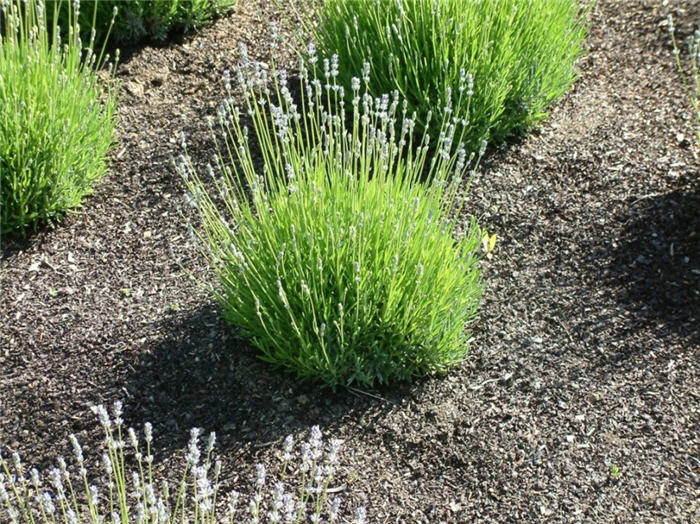| Botanical Name: Lavandula angustifolia 'Martha Roderick' | |
| Common Name: Martha Roderick English Lavender |

-
Anatomy
-
Culture
-
Design
Plant Type
Shrub, Perennial, Herb
Height Range
1-3'
Flower Color
Purple, Violet
Flower Season
Summer
Leaf Color
Grey Green
Bark Color
Grey
Fruit Color
n/a
Fruit Season
n/a
Sun
Full
Water
Low
Growth Rate
Moderate
Soil Type
Sandy, Clay, Loam
Soil Condition
Average, Poor, Well-drained, Dry
Soil pH
Neutral
Adverse Factors
Attracts Bees
Design Styles
English Cottage, Mediterranean, Ranch, Spanish
Accenting Features
Fragrance, Showy Flowers
Seasonal Interest
Summer
Location Uses
Perennial Border, Parking Strip, Raised Planter, Walkways
Special Uses
Cut Flowers, Hedge, Small Spaces
Attracts Wildlife
Butterflies
Information by: Stephanie Duer
Photographer:
Photographer:
-
Description
-
Notes
'Martha Roderick' is a very reliable, dense, mounding lavender growing to about 18 inches tall and 24 inches wide. It has powdery gray-green narrow, smooth foliage and fuzzy light lavender-blue flower spikes that bloom from June until September. Both foliage and blooms are deeply aromatic, especially when crushed.
Lavenders thrive in full sun and poor soils, though a little kindness will be rewarded with a bounty of flowers. Plant in well-drained soil. Cut back 1/3 to 1/2 size in spring when new growth begins to emerge. Does not like to be divided, though sometimes stems that touch the ground will root, and these can be snipped from the parent plant and transplanted. Deer resistant.